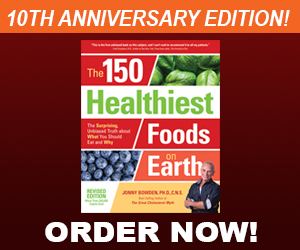I’ve long maintained that government recommendations for minimum daily requirements for most nutrients should be ignored. Frankly, they’re idiotic and reactionary. They were developed with the idea of preventing major nutritional deficiencies in the majority of people, and as such, they represent the pinnacle of what I call “minimum wage nutrition”.
Take vitamin C, the RDA for which is a laughable 75 mg a day for women and 90 mg a day for men. No health professional worth his or her salt thinks this is even close to an optimal level, yet this has been the Food and Nutritional Board of the National Academy of Sciences generously “upped” the recommended daily allowance from an even more ridiculous 60 mg back in 2000.
Remember, the RDA is defined as…
“The average daily dietary intake level that is sufficient to meet the nutrient requirement of nearly all healthy individuals in a particular life stage and gender group”.
So great. Now you know that if you are an “average healthy person” (whatever the heck that is) if you get your 75 mg of vitamin C every day you probably won’t get scurvy.
Whoop di doo.
(By the way—if you want to read a really interesting short essay on the politics of all this stuff, check out this essay I found while researching this article. It was written in 1996 by Steven W. Fowkes, the founder of CERI, the Cognitive Enhancement Research Institute).
Now, the Linus Pauling Institute at Oregon State University is calling for an increase in the RDA to 200 mg a day.
You may remember that Linus Pauling, a the two-time Nobel Prize winner and one of the most important scientists of the 20th century, turned his attention to vitamins and nutrients in his later years, and was a huge champion of vitamin C, arguing that biochemical individuality, molecular disease, or environmental stress may increase the need for certain nutrients to levels considerably above the RDA, a point of view that did not endear him to conventional medicine.
According to the Institute’s website…
“Pauling’s pronouncements on the subject of nutritional medicine were often assailed by physicians and physicians organizations that ignored his long and insightful involvement with the biochemistry of human health and much of the published studies. They often dismissed his ideas as quackery.”
For an Institute that bears the name of a visionary revolutionary thinker, the Linus Pauling Institute at Oregon State remains, in my view, remarkably moderate in its recommendations. Nevertheless, their advocacy of a doubling of the RDA for vitamin C is a step in the right direction.
 Having just completed what we hope will become a game-changing book on cholesterol and heart disease, and having read a veritable ton of research on the subject, I believe that chronic vitamin C deficiency is a contributing factor to heart disease. In our book, “The Great Cholesterol Myth”, cardiologist Stephen Sinatra, MD, and I recommend vitamin C as part of an overall program of heart health (along with such nutrients as omega-3’s, CoQ10, magnesium, carnitine, resveratrol, and curcumin).
Having just completed what we hope will become a game-changing book on cholesterol and heart disease, and having read a veritable ton of research on the subject, I believe that chronic vitamin C deficiency is a contributing factor to heart disease. In our book, “The Great Cholesterol Myth”, cardiologist Stephen Sinatra, MD, and I recommend vitamin C as part of an overall program of heart health (along with such nutrients as omega-3’s, CoQ10, magnesium, carnitine, resveratrol, and curcumin).
Since we now know that heart disease is initiated by inflammation and oxidation—not cholesterol—it makes sense to include a hefty dose of one of the most powerful anti-oxidants on the planet—vitamin C.
Interestingly, Linus Pauling himself proposed “A Unified theory of Cardiovascular Disease”, which, if correct, means that one of the great contributors to heart disease is a chronic vitamin C deficiency.
The published research on vitamin C is voluminous:
- Research at Sloane-Kettering Cancer Center in NY found that high intracellular concentrations of vitamin C can prevent oxidation-induced mutations in human cells.
- Recent research showed that men who had the highest intake of vitamin C were 14% less likely to develop prostate cancer.
- According to the Physicans Desk Reference for Nutritional Supplements 2nd edition, vitamin C is arguably the most important water-soluble biological antioxidant. (Since oxidative damage is a contributor to most major degenerative diseases, this is pretty significant.) The PDR also notes that vitamin C…
“may also have anti-atherogenic, anticarcinogenic, antihypertensive, antiviral, antihistaminic, immunomodulatory, ophthalmoprotective and airway-protective actions, and it may aid in the detoxification of some heavy metals such as lead and other toxic chemicals.”
Personally, I take at least 1000 mg of vitamin C every day, sometimes more. And for the record, stress eats up vitamin C. Most of my colleagues—including the more conservative ones—feel that at least 1000 mg of supplemental C a day is a good idea.
Foods that are high in vitamin C include kiwis, peppers (green, red, orange), orange and grapefruit juice, kale, leeks, oranges, and many other fruits and vegetables.
In the words of Linus Pauling…
“Ultimately, it will be common knowledge that the optimum daily intakes of vitamins are far larger that what can be had in food, even by selecting foods for their high vitamin content.”
Let’s hope he’s right.








Leave A Comment